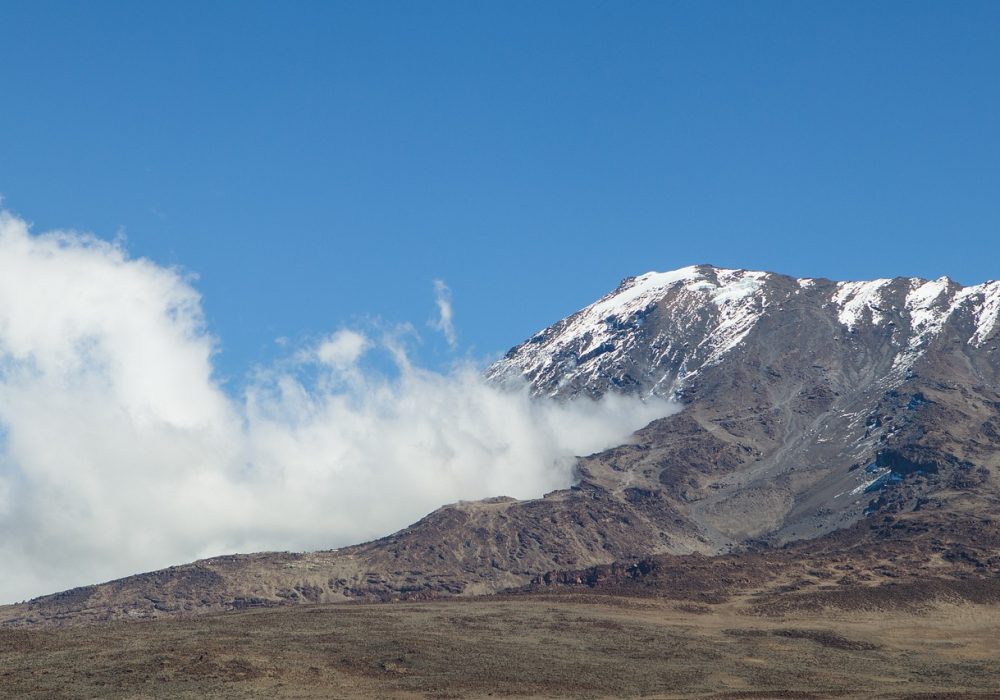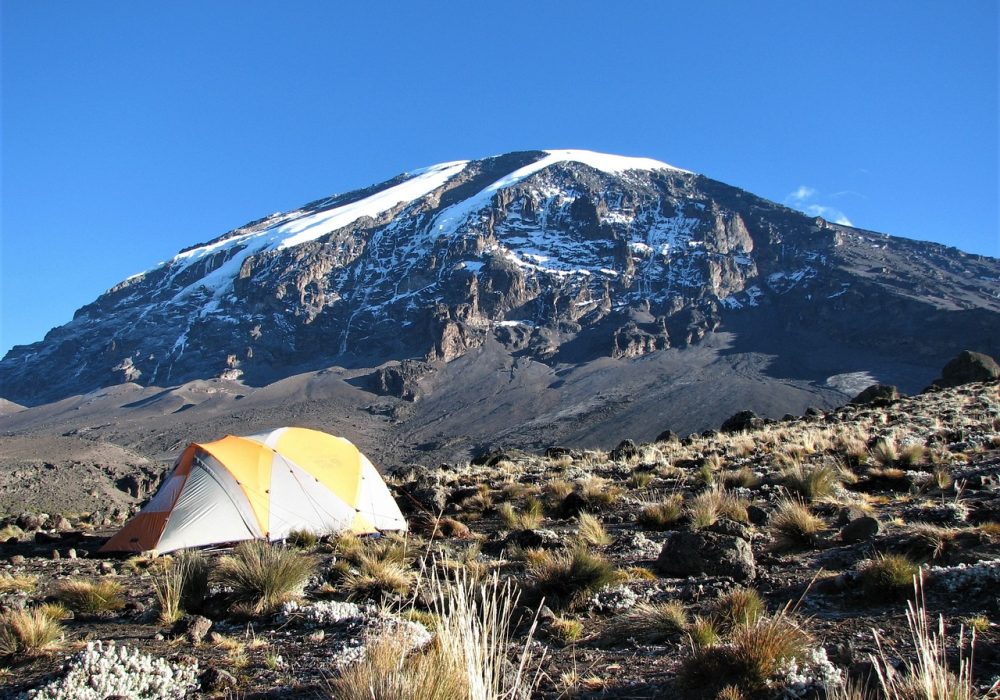

Kilimanjaro National Park
Kilimanjaro National Park is one of the most iconic and stunning natural wonders in Tanzania, home to Mount Kilimanjaro, the highest peak in Africa. This UNESCO World Heritage Site attracts adventure seekers, nature lovers, and trekkers from all over the world. Whether you’re aiming to summit the towering Uhuru Peak or simply enjoy the breathtaking landscapes and wildlife of the surrounding park, Kilimanjaro National Park offers an unforgettable experience.
Here’s a comprehensive guide to visiting Kilimanjaro National Park:
1. Welcome & Accessibility
Kilimanjaro National Park is located in northeastern Tanzania, near the town of Moshi and about 300 kilometers (186 miles) from Arusha. It is easily accessible from these major hubs, which are connected to international airports, making it convenient for travelers to reach.
How to Get There:
By Air:
- The closest international gateway to Kilimanjaro National Park is Kilimanjaro International Airport (JRO), located about 45 minutes by road from Moshi (the base for most treks to Kilimanjaro).
- Dar es Salaam and Arusha also have domestic flights, so if you’re flying into either of these cities, you can take a short flight to Kilimanjaro International Airport or use road transport.
By Road:
- If you’re already in Arusha or Moshi, you can reach the park by road. Moshi is the main town at the foot of Kilimanjaro and serves as the base for many trekking tours. You can reach Moshi by a 1.5-hour drive from Arusha (about 80 km/50 miles) and it is connected by well-maintained roads.
By Train: While train services are limited in the region, there is a train station in Moshi, and you can reach this town from other parts of Tanzania by rail.
Entrance Fees:
There are entrance fees for Kilimanjaro National Park, which can vary depending on whether you are trekking or just visiting. If you are climbing Mount Kilimanjaro, the fees are more substantial, covering park maintenance, ranger support, and various permits. It’s important to check the current rates before planning your visit.
2. Climatic Conditions
Kilimanjaro’s climate is diverse, varying from tropical at the base of the mountain to alpine and polar at the summit. Climatic conditions change dramatically as you ascend, and weather is a key factor to consider when planning a trek.
Base (Tropical Zone): The lower regions around Moshi and Arusha enjoy a tropical climate, with temperatures between 20°C (68°F) to 30°C (86°F) year-round. This zone is lush and green, with frequent rain showers during the long rainy season (March to May).
Moist Forest Zone: As you ascend, you enter the cloud forest zone (about 1,800 to 2,800 meters), where the temperature ranges between 10°C (50°F) and 20°C (68°F). It’s humid, with frequent rains and mist.
Alpine Desert Zone: At higher altitudes (from about 4,000 meters), the temperature drops significantly, and you enter a cold, arid alpine desert zone. The temperature ranges from -5°C (23°F) at night to 10°C (50°F) during the day.
Summit (Arctic Zone): At Uhuru Peak (5,895 meters), temperatures can plummet to -10°C (14°F) or lower, especially at night, and there are frequent snowstorms and high winds. This is considered an arctic zone, and climbers need to be prepared for extreme conditions.
Rainy Seasons: The short rainy season runs from November to December, and the long rainy season lasts from March to May. The best times to climb Mount Kilimanjaro are during the dry seasons, between June and October and January to February, when the weather is clearer and drier.
3. Activities
Kilimanjaro National Park is famous primarily for trekking and climbing Mount Kilimanjaro, but it also offers a range of other activities to explore its rich biodiversity and scenic beauty.
Climbing Mount Kilimanjaro:
Climbing Mount Kilimanjaro is the main activity in the park. There are multiple routes to the summit, and your choice depends on your fitness level, time, and preferences. The seven primary routes for climbing are:
- Marangu Route (Coca-Cola Route): The most popular and the only route with hut accommodations.
- Machame Route (Whiskey Route): A more challenging route, known for its scenic beauty.
- Lemosho Route: A longer, scenic route, often considered one of the most beautiful.
- Rongai Route: The only route approaching from the north.
- Umbwe Route: A shorter, but steep and challenging route.
- Shira Route: A less crowded route with fewer days for acclimatization.
- Northern Circuit: The newest and most scenic route, offering the best acclimatization opportunities.
Most trekkers take 5 to 9 days to reach the summit, with the goal being Uhuru Peak, the highest point of Kilimanjaro at 5,895 meters (19,341 feet).
Wildlife Viewing & Nature Walks:
While climbing Mount Kilimanjaro is the primary activity, the park also offers nature walks in lower altitudes, particularly in the rainforest zone. You can spot various species of wildlife, including:
- Colobus monkeys
- Bushbucks
- Warthogs
- Zebras
- Buffalo
- Various bird species, including the African fish eagle, hornbills, and buzzards.
There are also night game drives available at the base of the mountain in the Moshi area, although wildlife is not as dense as in other Tanzanian parks like Serengeti or Ngorongoro Crater.
Cultural Tours:
Explore the Chagga people culture around the slopes of Mount Kilimanjaro. You can visit traditional villages and learn about their way of life, agricultural practices, and interaction with the mountain. Activities may include:
- Coffee tours to learn about the famous Kilimanjaro coffee.
- Cultural performances including music, dance, and traditional ceremonies.
- Local market visits to experience the bustling trade in Moshi and nearby towns.
Birdwatching:
Kilimanjaro is home to a diverse range of birds due to its varied ecosystems. Birdwatchers can find over 300 species of birds, especially in the rainforest zone. Some notable birds to watch for include:
- White-necked Raven
- African Green Broadbill
- Hartlaub’s Turaco
- Kilimanjaro Eagle Owl
4. Attractions
The primary attraction of Kilimanjaro National Park is, of course, Mount Kilimanjaro itself, but there are several other notable features and attractions in the park:
Mount Kilimanjaro Summit: Uhuru Peak (5,895 meters) is the ultimate prize for climbers. The views from the summit are breathtaking, and it’s a monumental achievement to reach the highest point in Africa.
Kilimanjaro Forests: The lower slopes of Mount Kilimanjaro are covered in lush rainforests, and the Machame Route and Lemosho Route pass through these verdant areas. The cloud forests on Kilimanjaro are home to a variety of plant species, including giant groundsel and lobelias.
Stark Alpine Desert: Above 4,000 meters, you enter a desert-like landscape, where only the most hardy plant species survive, like the giant Senecio plants. This dramatic landscape is stark and offers an otherworldly beauty as you approach the summit.
Crater and Glaciers: At the summit, you’ll see remnants of Kilimanjaro’s glaciers and volcanic craters, such as Kibo Crater. The glaciers have been rapidly receding, making this area even more unique and photogenic.
Mweka Gate: The Mweka Gate is often the entry or exit point for climbers finishing their trek. It offers great views of the surrounding landscape and is the site for climbers to sign in and out of the park.
5. Additional Tips for Visitors
Best Time to Visit: The best times to climb Mount Kilimanjaro are during the dry months—June to October and January to February. The rainy seasons, from March to May, are best avoided due to the unpredictable weather and slippery trails.
Acclimatization: Altitude sickness is a real concern on Kilimanjaro. It’s essential to allow enough time for acclimatization and follow your guide’s advice. Slower ascents increase your chances of success.
Packing Essentials: For the climb, you’ll need specialized gear, including:
- Warm clothing for the summit (even in tropical Tanzania, it can be freezing at the top).
- Good hiking boots.
- A sleeping bag suitable for cold weather.
- Sunscreen, sunglasses, and a hat for sun protection at lower altitudes.
- A water filter or purification tablets for clean drinking water.
Guides & Porters: All climbers must be accompanied by a licensed guide and support crew (including porters) as per Tanzanian regulations. These guides will ensure your safety and help with navigating the mountain.
Conclusion
Kilimanjaro National Park is a bucket-list destination for adventurers and nature enthusiasts alike. Whether you’re climbing the mighty Mount Kilimanjaro, enjoying nature walks through the lower slopes, or exploring the unique cultural heritage of the region, there is something for everyone. The opportunity to reach Uhuru Peak, standing at the top of Africa, remains one of the most thrilling and fulfilling experiences in the world of adventure travel.
